Reviews
Roland West
USA, 1930
Credits
Review by Michael Nordine
Posted on 17 October 2011
Source Image Entertainment DVD
Categories 31 Days of Horror VIII
Detectives won’t do no good; the whole police force won’t do no good. They can’t stop ghosts…
There’s a case to be made for The Bat Whispers as a minor technical marvel. Ahead of its time in more ways than one, the film was shot simultaneously in 1.33:1 35mm and 2:1 65mm Magnifilm and makes extensive (though rarely seamless) use of meticulously-designed miniature sets. This wizardry announces itself immediately via an overhead shot of a miniature skyscraper that then pans down to an actual street view; the splice between the two is quite noticeable, but the effort is impressive enough to make us curious as to what might happen next. Such moments recur throughout - some featuring slot cars that fill the frame with the huge amounts of smoke they cough up, others focused more on architectural oddities - and are easily the film’s most distinct trait. Add to all this the fact that the title character, an almost anarchic villain who murders and steals from the upper crest of society simply because he can, is an avowed inspiration for Batman, and the film’s status as almost entirely overlooked seems strange indeed. But what The Bat Whispers delivers in mood and technique it sadly lacks in a plotting and characterization, dual handicaps that, while not wholly diminishing the possibility of enjoying Roland West’s talkie remake of his own silent picture from 1926, go a long way toward explaining its place among the shadows.
And yet this doesn’t feel like the Depression-era equivalent of an action or horror film privileging effects over substance. There’s no doubting the sincerity or intention of The Bat Whispers, only how well it’s aged. Its story, which revolves around the eponymous villain terrorizing a group of people for no apparent reason, is fertile ground for any number of different angles, but West seems hesitant to truly dig into both his characters and the precarious situations in which they find themselves. More often he’s content to let them stand around yelling at one another, a too-clear sign of the story’s origins as a stage play some years earlier. The most intriguing moments seem to occur offscreen, where neither we nor anyone else know what the Bat is up to.
Not long into the film, the main cast is rounded up into a cavernous mansion on the outskirts of New York. This shift from the city to the country proves an ideal setting for the many hapless characters’ paranoia to take hold—and their true colors to bleed through. It also allows the Bat to roam in and out of windows and backdoors at will. He frightens the guests in whatever way he sees fit, slinks off into the darkness, and returns only when they’ve once again begun to rest easily. Like these men and women, we’re left to wonder who the masked fiend is and what his motives might be. From what little we know, the Bat - whom we see primarily in silhouette à la Nosferatu - is interested in his victims’ money not for its own sake but because relieving the ultra-rich of their material wealth is the surest way to publicly humiliate them (and, in turn, perpetuate the mystery and intrigue surrounding his existence). The Bat is interested in breaking people down and seeing what remains once he’s through—a trait shared, interestingly enough, not with Batman but his nemesis the Joker. He’s a strange figure not only on his own but also for the various ways in which traces of his persona have shown up in subsequent and better-known characters.
When we catch glimpses of the Bat’s face, he appears to be well past middle age; when we hear his voice, it’s surprisingly unimposing. Far from a formidable physical presence, the Bat’s game is a mental one, a continual series of sleights of hand and brief appearances meant to let his victims see only enough to swear that the man they’ve just glimpsed is more frightful than he actually is. He’s acutely aware of the mind’s capacity and inclination to embellish what the senses perceive, and exploits this mental process to its fullest effect. And though there’s never any question that the Bat is to be thought of as a villain and a fiend, neither are we made to feel especially sorry for his victims. Excess and greed defined the decade preceding The Bat Whispers in a unique way, and the fact that the Bat exclusively targets the wealthy makes conceiving of him as a sort of inverted (and likely insane) Robin Hood tempting indeed. Of course, the Bat doesn’t redistribute their wealth to the poor; more likely, he simply hoards it away. This isn’t exactly tale of revenge and retribution, but rather one concerned with a destructive force for whom mayhem is to be considered a satisfying end in and of itself. What minimal fear he evokes some eighty years later comes almost entirely as a result of the film’s refusal to let us into his mind and understand what makes him tick.
This nihilistic bent is ever-present throughout the film, but rarely foregrounded. West and his cast have a more immediate concern with creating an atmosphere of dread which, for anyone watching the film today, is mostly lost. It thus becomes easier to view The Bat Whispers as a self-contained world in which the evil force pulling the strings is as indiscriminate in his malice as his victims are idle with their wealth. What the Bat does better than anything else is challenge his victims’ notions about the world and the bad things “out there” among “other people.” When his villainy breaks through the heretofore impenetrable walls of class and society, they catch a glimpse of something they’ve no idea what to do with. The men and women assembled in the mansion - the lady of the house, her maid, any number of detectives, and so on and so forth - spend much of their time quibbling among themselves in order to find out who among them might be in league with the Bat—or, indeed, the man himself. The big reveal which punctuates this directionless finger-pointing isn’t climactic, but it is a relief: they finally know exactly where to direct their fear, their anger, their judgement.
More 31 Days of Horror VIII
-

Westworld
1973 -
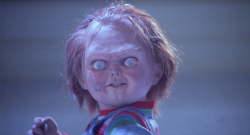
Child’s Play
1988 -
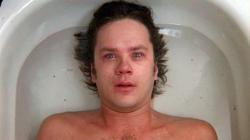
Jacob’s Ladder
1990 -
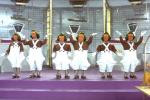
Willy Wonka and the Chocolate Factory
1971 -
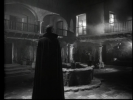
El Vampiro
1957 -
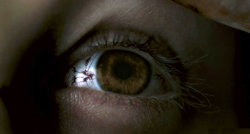
28 Weeks Later
2007 -

Piranha II: The Spawning
1981 -
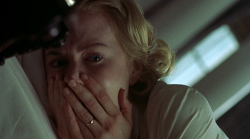
The Others
2001 -
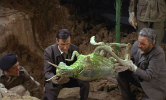
Quatermass and the Pit
1967 -

I Know Who Killed Me
2007 -

Bride of Re-Animator
1990 -

Alucarda
1978 -
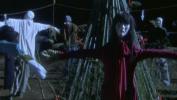
Kakashi
2001 -

Seizure
1974 -
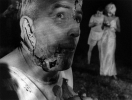
Night of the Living Dead
1968 -
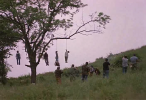
Night of the Living Dead
1990 -
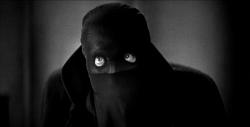
The Bat Whispers
1930 -

Miracle Mile
1988 -

Tintorera
1977 -

Paradise Lost
1996 -

The Cars that Ate Paris
1974 -

Ginger Snaps
2000 -
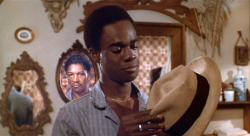
J.D.’s Revenge
1976 -
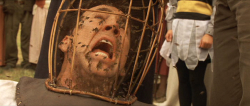
The Wicker Man
2006 -

Black Water
2007 -
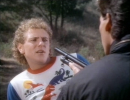
Don’t Panic
1988 -
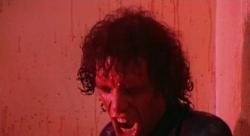
The Driller Killer
1979 -

Targets
1968 -

Mahal
1949 -
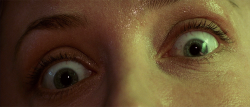
Event Horizon
1997
We don’t do comments anymore, but you may contact us here or find us on Twitter or Facebook.



